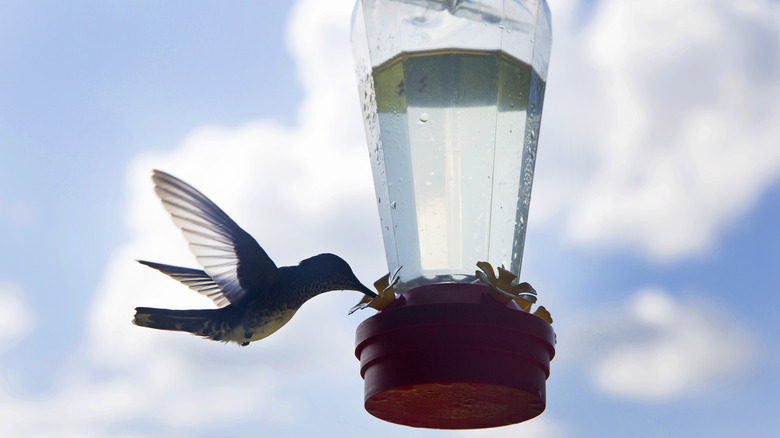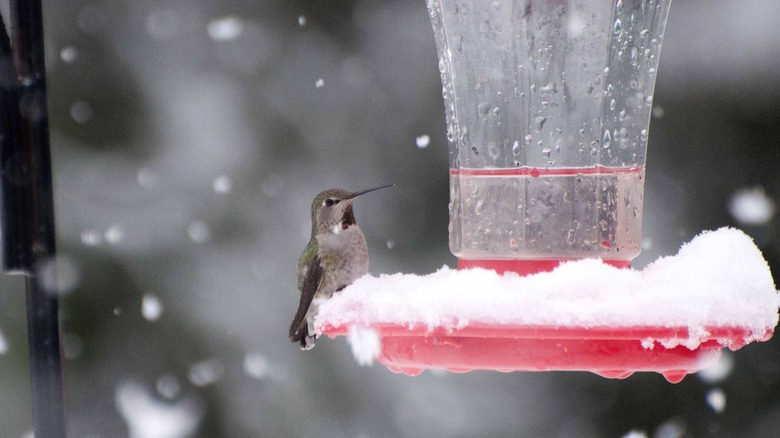The Sneaky Hummingbird Nectar Recipe Your Neighbors Will Want To Know
Sugar and water — nothing more, nothing less. That's all it takes to give visiting hummingbirds an energizing meal. Homemade hummingbird nectar is surprisingly easy to make, so there's no reason to purchase a special product. However, when you're stirring up your brew, the ratio is key. Most sources recommend dissolving ¼ cup of plain table sugar in 1 cup of hot water and letting it cool before pouring it into a clean and sterilized feeder. Despite the color of some premade nectars you can purchase, the one thing you should never add to your hummingbird nectar is red dye. This unnecessary additive can be dangerous for the birds.
But some backyard birders share that a richer nectar formula lures in hummingbirds better than the gold standard recipe. Upping the sugar content to ⅓ cup per 1 cup of hot water can be a great boost for the birds and may attract them to your feeder over others, but it should only be provided at certain times. This sugar concentration may be too high for long-term feeding; it may be harmful to the birds but also cause problems for your feeder. Too-sweet nectar can be harder for hummers to digest. Also, it doesn't hydrate the birds as well as the more conservative formula, and this may potentially lead to kidney or liver problems if solely consumed. As you might expect, sweeter nectar can also attract more bees, wasps, and ants to your feeders. So, when is it okay to give them the super-charged version? In short, more sugar can be used to attract more birds in certain weather and at certain times of the day and year.
When is the best time for more sugar?
Just like how we humans crave hearty foods and drinks when it gets cold, the hummingbirds also benefit from a more substantial meal at those times. If it's chilly and rainy or just straight up cold, this is the perfect opportunity to provide your visitors with a more energizing nectar. This can be especially helpful when our cross-continental friends arrive before the last snow. This concentration is also helpful for your feeders in the shoulder seasons, since more sugar in the water keeps it from freezing.
Hummingbird migration paths are flabbergasting. For a bird the weight of a few pennies that flies hundreds to thousands of miles each year, it's no surprise that they use up a lot of calories accomplishing this feat. Support hummingbirds in your garden during migration season by whipping up a batch of 1:3 ratio nectar. You can do this if you have birds passing through during migration or to help them bulk up before their trek back south in the fall.
If you have the time and space to swap out feeders throughout the day, you can also hang a feeder stocked with sweeter nectar in the evening. Hungry birds can fuel up on the heavier stuff during the coldest parts of the day. Once the morning warms up, trade the sweeter feeder out for one filled with the standard ratio of nectar.

